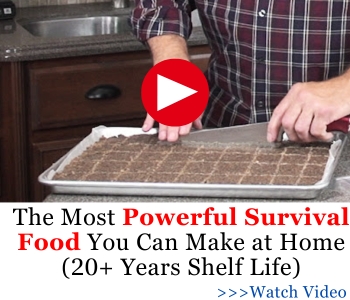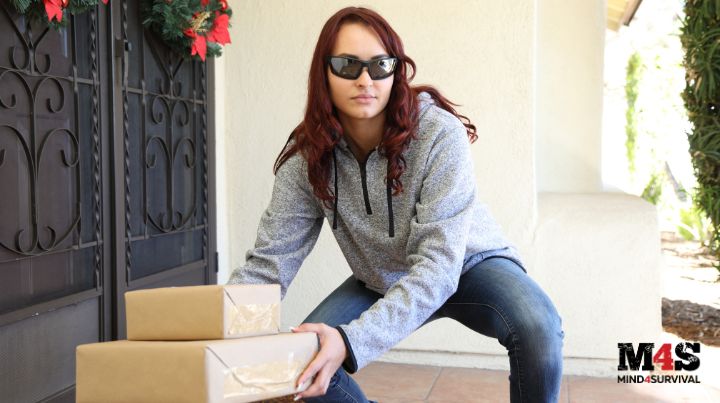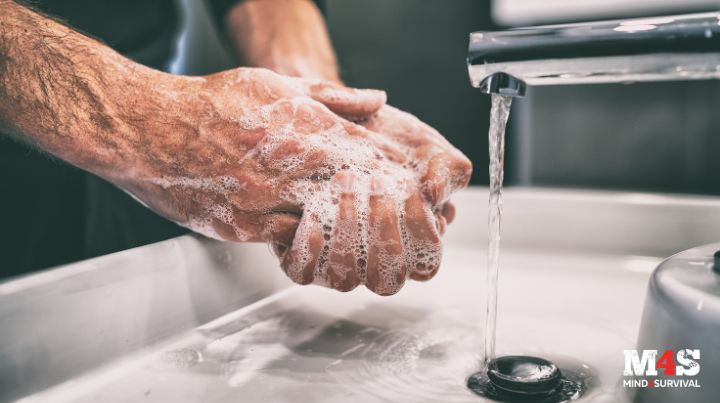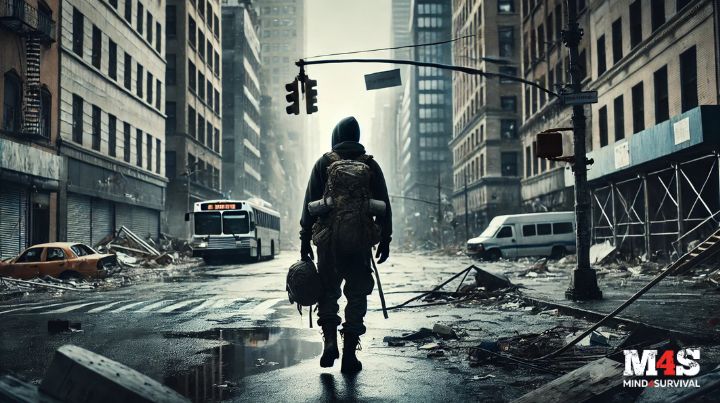How Long Can You Survive Without Food?

We like to think of food as comfort, choice, and pleasure. But strip away the grocery store aisles and kitchen cupboards, and it becomes something much darker: survival. The big question preppers ask—how long can you survive without food? The answer is more chilling than most people want to admit.
When times are stable, food is almost invisible. You eat three meals a day, snack when you want, maybe even waste some. But in a crisis, the illusion shatters. Food becomes currency. Food becomes leverage. Food becomes life or death. That’s why this isn’t just an interesting trivia question—it’s a wake-up call.
The ugly truth is, most people are so disconnected from the reality of scarcity that they assume someone will always feed them. That someone isn’t coming. Not in time. By the time FEMA trucks show up (IF they show up), the line is already miles long, and you’ll be competing with desperate neighbors. If you’re unprepared, you’re gambling with hunger—and hunger always wins.
The Hard Facts
On average, a human can survive anywhere from 21 to 40 days without food, depending on health, body fat, hydration, and environmental stress. That doesn’t mean you’re functional. Far from it. Within just a few days, you’ll feel dizzy, sluggish, and weak. Muscle breakdown starts. Mental clarity fades. After two weeks, your body cannibalizes itself for energy. By the time you hit a month, survival depends on sheer willpower, water access, and luck.
Related: How to Install a Rainwater Collection System
Now, survival isn’t just about how long you can technically last—it’s about what condition you’re in during that time. A soldier who hasn’t eaten for a week is combat-ineffective. A parent who hasn’t eaten for ten days can’t carry their child to safety. You might technically still be alive, but you’re useless when your family needs you most.
Even worse, food deprivation doesn’t just drain your body—it crushes your mind. Hunger drives paranoia, short tempers, and desperation. Civilizations have toppled because of empty bellies. And if you think you’ll just “tough it out,” imagine trying to secure water, defend your home, or make rational choices when your brain is screaming for calories. That’s not survival. That’s slow suicide.
Survival Timeline: What Happens Without Food
- Day 1: Hunger pains hit, blood sugar drops, focus weakens.
- Day 3: Fatigue, irritability, mental fog, dehydration risk rises.
- Day 7: Muscle breakdown begins, strength and endurance plummet.
- Day 14: Immune system compromised, weakness extreme.
- Day 21+: Severe organ stress, body cannibalizes itself. Death can follow anytime after.
Situations Where Food Shortages Kill
- Natural Disasters: Hurricanes, floods, and wildfires can cut supply chains in hours. Stores empty, trucks stop, shelves stay bare.
- Economic Collapse: Skyrocketing food prices mean the poor starve first. But middle-class families won’t be far behind.
- Grid Down Events: Without power, food spoils. Your fridge becomes a liability in less than 48 hours.
- Pandemics: Remember empty shelves in 2020? That wasn’t the worst-case scenario. That was just the warning shot.
These aren’t abstract hypotheticals—they’re the exact playbook of history. Rome fell partly because of food shortages. The Soviet Union’s breadlines turned ordinary citizens into beggars. Even in modern America, a single snowstorm can strip a supermarket bare in less than a day. Food insecurity is the spark that lights riots, looting, and violence.
Picture yourself in one of these scenarios. You walk into the store after the disaster hits, and the shelves are already empty. What you see isn’t food—it’s panic. Families grabbing anything left, fighting over the last sack of rice, clerks locking doors while police stand guard. At that moment, you’ll either be one of them—or you’ll already be home, eating from a stockpile you prepared weeks, months, or years before.
Why Preparedness is Non-Negotiable
Ask yourself: do you want to be the person rationing a single can of beans for three days, or the person calmly feeding their family while chaos rages outside? The difference isn’t luck. It’s foresight. Stockpiling food isn’t paranoid—it’s survival insurance.
Related: 10 Long Shelf-Life Canned Foods Every Prepper Should Consider Stockpiling
Preparedness is about removing panic from the equation. When everyone else is fighting for scraps, you’ll have the peace of mind to focus on other priorities—securing water, maintaining defenses, or tending to loved ones. That clarity is priceless. Without food security, everything else collapses.
And let’s not sugarcoat it: depending on “the system” to provide is a death sentence. Governments ration. Aid is stolen. Supply trucks don’t always make it through. The only food you can truly count on is the food already under your control. Prepping turns the question from “how long can I survive without food?” into “how long can I thrive with the food I’ve secured?”
The Smart Prepper’s Advantage
Here’s where the real survivors pull ahead: they plan food storage with precision. They know exactly how much rice, beans, protein, and calories are needed to keep their household alive for weeks, months, even years. They understand that every ounce counts, that wasted food is wasted survival.
Related: These Stockpiling Mistakes Could Kill You
Smart preppers don’t hoard blindly—they strategize. They calculate calories per person, balance protein and carbs, and rotate supplies to avoid spoilage. They don’t just stockpile—they systematize. That means zero waste, maximum efficiency, and the knowledge that when a disaster hits, their pantry won’t just look full—it will sustain life.
And let’s be blunt: knowledge is what separates prepared from desperate. Without it, you’re just stacking random cans until they expire. With it, you’re building a lifeline for your family. The smart prepper isn’t guessing how long they’ll last—they know. And that certainty is worth more than gold in a crisis.
Food Stockpile Calculator: Calories & Shelf Life You Need to Know
| Food Type | Calories Per Cup | Shelf Life (Stored Properly) | Prepper Notes |
| White Rice | ~700 | 25+ years (in Mylar + O2) | Cheap, calorie-dense, base carb |
| Pinto Beans | ~670 | 25+ years (if sealed) | Protein + fiber, must soak/cook |
| Rolled Oats | ~300 | 20+ years | Fast prep, versatile, breakfast staple |
| Peanut Butter | ~1,500 per cup | 2–3 years | High protein & fats, morale booster |
| Canned Tuna | ~200 per can | 3–5 years | Portable protein, rotates easily |
| Lentils | ~680 | 20+ years (dry storage) | Quick-cooking protein, soup base |
| Sugar | 770 | Indefinite | Energy, preserves other foods |
| Honey | ~1,000 | Indefinite | Natural sweetener, medicinal use |
Your Next Step to Survival
If this rattled you, good. It should. Because survival isn’t about comfort—it’s about reality. And the reality is this: you won’t last long without food.
That’s why The Bug-In Guide isn’t just another book—it’s your blueprint for staying alive when the system collapses. The food stockpile section alone will show you exactly how much to store, what to prioritize, and how to make it last without waste. This isn’t theory. It’s step-by-step, field-tested survival math.
When shelves are stripped bare, when neighbors are fighting in the parking lot, when your kids are looking at you with hungry eyes—you’ll either wish you had prepared, or you’ll be grateful you did. There’s no middle ground.
Get The Bug-In Guide Here
Don’t wait for hunger to remind you how fragile life is. Lock in your food security now, while you still can. Because once the crisis hits, it won’t matter how long a human can survive without food—what matters is whether you made sure your family never has to find out.
You may also like:

Could Your Stockpile Kill You?
Break Free from the Water Grid with Just $270 and One Hour of Your Time (Video)
Instant Foods You Need to Stockpile Before They Disappear
Foods You Can Regrow From Scraps
5 Foods That Disappear First In A Crisis
Read the full article here









